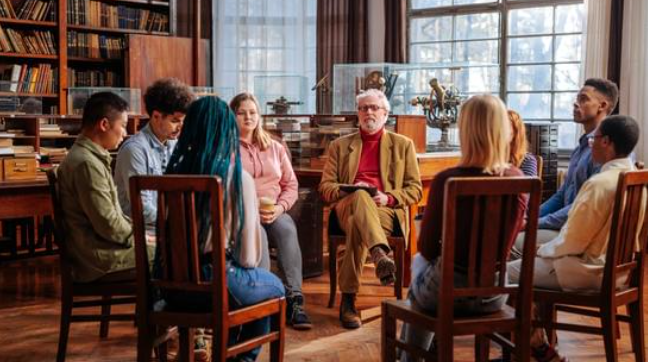
If you’re wondering how long PHP treatment lasts, you’re likely facing a difficult decision about intensive mental health care.
Most Partial Hospitalization Programs run for 3 to 6 weeks, with adults typically completing treatment in about 4 to 5 weeks and adolescents averaging 3 to 4 weeks.
This article will break down PHP schedules, daily structures, and the factors that determine treatment duration to help you understand what to expect.
What is PHP Treatment Duration?
PHP treatment duration varies based on individual needs, but regulatory guidelines and clinical evidence point to consistent patterns. Medicare defines PHP as requiring a minimum of 20 hours of therapeutic services per week, delivered through intensive daily programming typically lasting 6 to 7 hours per day.
The short-term nature of PHP makes it different from longer outpatient programs. While Intensive Outpatient Programs often run 6 to 10 weeks, PHP’s higher intensity allows for faster stabilization and symptom management.
Typical PHP Schedule Structure
Daily Schedule Framework
Most PHP programs follow a structured 5-day weekly schedule. North Dakota’s youth PHP program specifies six hours per day, five days per week, which represents the standard approach across programs.
A typical PHP day includes:
- Group therapy sessions (3-4 hours total)
- Individual therapy (1-2 sessions per week)
- Family therapy (weekly minimum for youth programs)
- Psychiatric medication management
- Nursing and health education
- Occupational or recreational therapy
- Educational components (for adolescent programs)
Weekly Intensity Requirements
PHP programs must meet specific intensity thresholds to qualify for insurance coverage. The 20-hour weekly minimum ensures patients receive hospital-level care while returning home each evening. This structure allows for comprehensive treatment without the disruption of inpatient hospitalization.
How Long Does PHP Treatment Last by Population?
Adult PHP Duration
Adult PHP programs typically last 3 to 6 weeks. Research on virtual PHP programs describes treatment as “short-term, up to 6 weeks,” with most adults completing programs within this timeframe.
Studies comparing telehealth to in-person PHP found that virtual programs extend treatment by an average of 2.8 days. This modest increase may reflect the convenience and accessibility of virtual care, allowing patients to engage more consistently.
Adolescent PHP Duration
Youth programs tend to be shorter than adult programs. State program specifications cite an average length of stay of 3 to 4 weeks for adolescent PHP treatment.
Adolescent programs often include:
- Daily academic components (1-2 hours)
- Weekly family therapy requirements
- School reintegration planning
- Developmentally appropriate group content
Specialized PHP Programs
Eating disorder day programs may vary in duration based on medical stabilization needs. However, systematic reviews of youth eating disorder programs show effectiveness within several weeks, consistent with standard PHP timeframes.

Factors That Influence PHP Treatment Length
Clinical Factors
Treatment duration depends on several clinical considerations:
- Symptom severity and acuity
- Response to interventions
- Medication stabilization needs
- Risk factors (suicidality, self-harm)
- Family engagement and support systems
Insurance and Authorization
Medicare Advantage plans require prior authorization for PHP treatment in 91% of cases. Approvals typically come in 5 to 10-day blocks, with reauthorization based on documented progress. This system naturally creates the observed 3 to 6-week treatment courses.
Program Structure and Discharge Planning
Effective PHP programs include structured discharge planning with tapering intensity. Clinical guidelines recommend reducing weekly visit frequency as patients near discharge to support transition to lower levels of care.
Virtual vs. In-Person PHP Schedules
Virtual PHP programs maintain the same intensity and structure as in-person treatment. Research shows that telehealth PHP can achieve comparable or superior outcomes, including higher attendance rates and reduced hospitalization.
Key considerations for virtual PHP:
- Same daily hour requirements (6-7 hours)
- HIPAA-compliant video platforms
- Structured attendance tracking
- Technology backup plans
- Slightly longer average duration (2-3 additional days)
PHP vs. IOP: Duration Differences
The intensity difference between PHP and IOP directly affects treatment duration. While PHP requires 20+ hours weekly and typically lasts 3 to 6 weeks, IOP programs often run longer, averaging 8 weeks or more at 9+ hours per week.
This inverse relationship reflects treatment philosophy: higher intensity programs achieve stabilization faster, while lower intensity programs require longer engagement for similar outcomes.
What to Expect During PHP Treatment?
Week 1-2: Assessment and Stabilization
- Comprehensive psychiatric evaluation
- Medication adjustments
- Crisis stabilization
- Treatment plan development
Week 3-4: Skill Building and Progress
- Intensive group therapy participation
- Individual therapy sessions
- Family engagement
- Symptom monitoring and adjustment
Week 5-6: Discharge Preparation
- Intensity tapering
- Transition planning
- IOP or outpatient referrals
- Relapse prevention planning

Planning for PHP Treatment Duration
When planning for PHP treatment, expect:
- Adults: 4 to 5 weeks on average (3 to 6-week range)
- Adolescents: 3 to 4 weeks average
- Virtual programs: Add 2 to 3 days to typical duration
- Insurance: Multiple authorization periods throughout treatment
Programs should document progress regularly to support reauthorization requests and ensure continuous care without interruption.
If you or a loved one needs intensive mental health support, PHP treatment offers an effective alternative to hospitalization. With proper planning and realistic expectations about duration, PHP can provide the stabilization and skills needed for long-term recovery.
Contact our PHP program to learn more about our structured treatment approach and how we can support your recovery journey.
